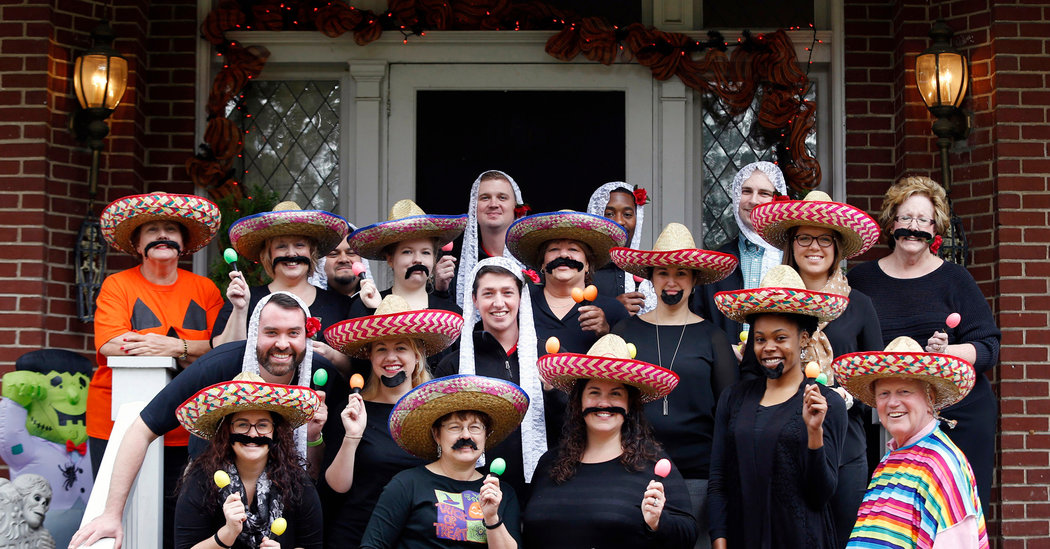Halloween, a time of revelry marked by costumes and festivities, serves as a significant cultural marker in many societies. However, as revelers eagerly don costumes that range from whimsical to frightening, an underlying issue surfaces: cultural appropriation. Cultural appropriation, in the context of Halloween, refers to the adoption of elements from one culture by individuals, often from a more dominant culture, without permission, understanding, or respect. This practice can lead to the trivialization of cultural symbols and perpetuates harmful stereotypes. As society continues to grapple with issues of representation and equality, it is crucial to reassess the implications of cultural appropriation in Halloween costumes.
The celebration of Halloween has a rich history, stemming from traditions such as the Celtic festival of Samhain, where people would light bonfires and wear costumes to ward off ghosts. Over time, this morphed into a more secular celebration, heavily influenced by commercialism. Today, the array of costumes available can be astounding, ranging from contemporary pop culture figures to historical and ethnic representations. However, therein lies a conundrum; while the act of dressing up is often intended for fun, many costumes draw from cultures that do not belong to the wearer. This raises questions about power dynamics, respect, and the appropriation of cultural heritage.
One of the most pressing concerns surrounding cultural appropriation in Halloween costumes is the trivialization of deeply-rooted cultural symbols. For instance, costumes that mimic traditional attire from Indigenous cultures, Asian cultures, or African tribes may reduce rich cultural narratives and histories to mere gimmicks. Such representations often vilify or oversimplify intricate cultural expressions, transforming important symbols into mere caricatures. The act of Commodifying these cultural aspects can lead to misunderstandings and the perpetuation of damaging stereotypes that harm marginalized communities.
Furthermore, the concept of “Costume vs. Culture” emerges as a vital distinction. For many individuals, a costume is a temporary escape from reality, a mask to wear for a night of festivities. Yet, for the communities from which these symbols originate, these costumes may evoke a painful history of colonization, oppression, or stereotyping. For example, wearing a headdress, often appropriated from Native American cultures, does not account for the spiritual significance and cultural reverence attached to those items. It is a misrepresentation that can be offensive and alienating for those who hold these cultural practices sacred.
Critics of cultural appropriation in Halloween costumes often emphasize the importance of contextualizing our choices. Acknowledging the power dynamics at play is essential in understanding the ramifications of cultural appropriation. When an individual from a dominant culture dons an outfit that symbolizes oppression or trauma for another culture, it amplifies existing inequalities while trivializing the lived experiences of others. Engaging with cultural elements requires a commitment to understanding and respect, rather than tokenism.
The dialogue around cultural appropriation in Halloween costumes has elicited broader conversations about representation and respectfulness. Many argue that individuals should engage in cultural exchange rather than appropriation. Cultural exchange allows for mutual understanding and appreciation, ensuring that both parties are acknowledged and respected. This can be accomplished through authentic engagement, collaboration, and education about the cultural practices being celebrated or depicted.
The rise of social media platforms has enabled a dynamic conversation around cultural appropriation. With a single tweet or post, individuals can share their perspectives, experiences, and grievances, thereby cultivating awareness and advocating for change. Social media has democratized discourse and allowed for the voices of marginalized groups to be amplified. As awareness grows, more people are reconsidering their costume choices, opting to celebrate cultural appreciation instead of appropriation. This shift in mindset signifies a broader societal awareness that can propel transformative conversations around cultural sensitivity and respect.
To navigate the complexities of Halloween costumes respectfully, a few guiding principles can be adopted. First, one should consider the historical significance of the cultural elements being adopted. Does the costume perpetuate stereotypes or reinstate power imbalances? Second, there is power in listening to marginalized voices. Engaging with individuals from the culture being represented can provide insight and prevent misunderstanding. Third, it is essential to create a space where cultural celebration does not override the history of hardship and trauma associated with that culture.
Lastly, the essence of Halloween—celebration—can still thrive without resorting to cultural appropriation. Creatively interpreting costumes through original ideas, fantasy, or figures from literature and mythology allows individuals to express themselves without diminishing another culture’s significance. By embodying creativity that diverges from considerations of race, ethnicity, or heritage, the Halloween spirit can flourish without perpetuating harm. This shift promises not just a more inclusive celebration but fosters mutual respect among cultures, leading society towards a more equitable future.
In summation, Halloween costumes should be approached with discernment and cultural sensitivity. Understanding the implications of cultural appropriation leads the community toward more responsible and respectful interactions, ultimately enriching our shared cultural experiences. By prioritizing appreciation over appropriation, society can ensure that Halloween becomes a platform for unity, respect, and understanding rather than division and insensitivity.
